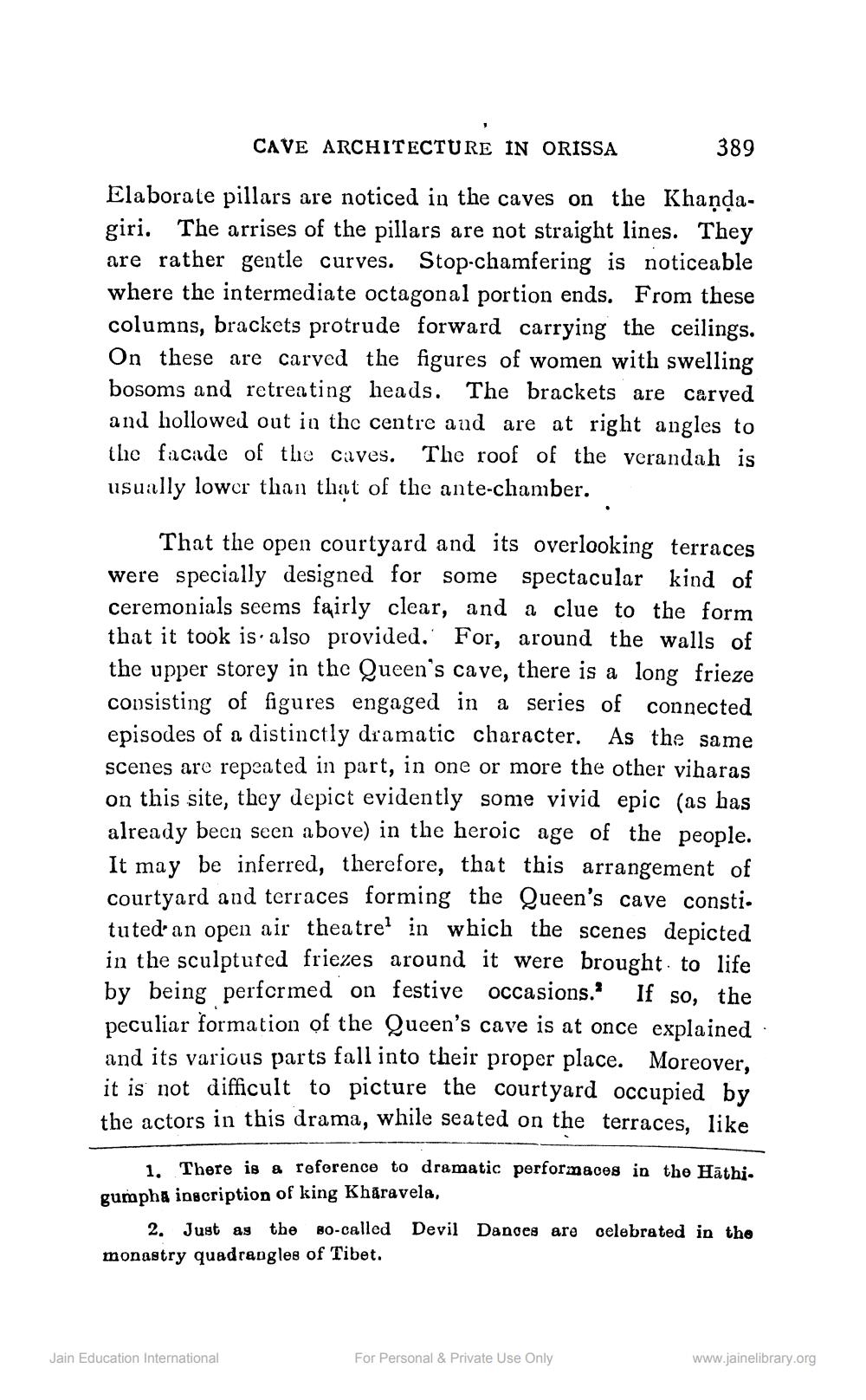________________
389
CAVE ARCHITECTURE IN ORISSA Elaborate pillars are noticed in the caves on the Khandagiri. The arrises of the pillars are not straight lines. They are rather gentle curves. Stop-chamfering is noticeable where the intermediate octagonal portion ends. From these columns, brackets protrude forward carrying the ceilings. On these are carved the figures of women with swelling bosoms and retreating heads. The brackets are carved and hollowed out in the centre and are at right angles to the facade of the caves. The roof of the verandah is usually lower than that of the ante-chamber.
That the open courtyard and its overlooking terraces were specially designed for some spectacular kind of ceremonials seems fairly clear, and a clue to the form that it took is also provided.' For, around the walls of the upper storey in the Queen's cave, there is a long frieze consisting of figures engaged in a series of connected episodes of a distinctly dramatic character. As the same scenes are repeated in part, in one or more the other viharas on this site, they depict evidently some vivid epic (as has already been seen above) in the heroic age of the people. It may be inferred, therefore, that this arrangement of courtyard and terraces forming the Queen's cave consti. tuted' an open air theatre? in which the scenes depicted in the sculptured friezes around it were brought to life by being performed on festive occasions. If so, the peculiar formation of the Queen's cave is at once explained and its various parts fall into their proper place. Moreover, it is not difficult to picture the courtyard occupied by the actors in this drama, while seated on the terraces, like
There is a reference to dramatic performaces in the Hāthi. gumpha inscription of king Khåravela,
2. Just as the so-called Devil Danoes are celebrated in the monastry quadrangles of Tibet.
Jain Education International
For Personal & Private Use Only
www.jainelibrary.org




